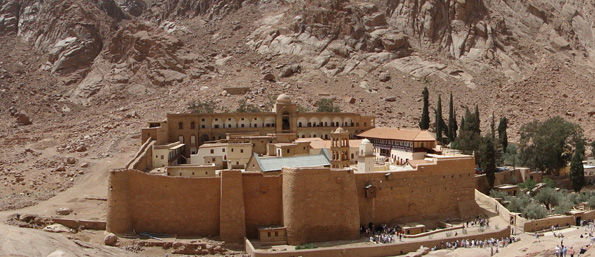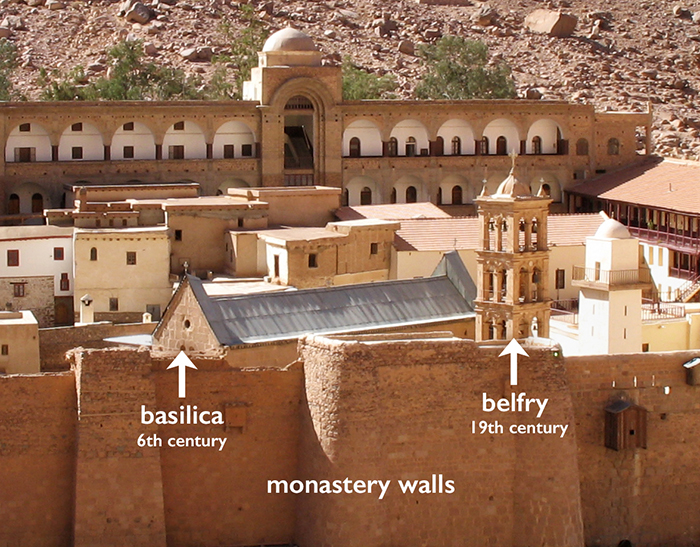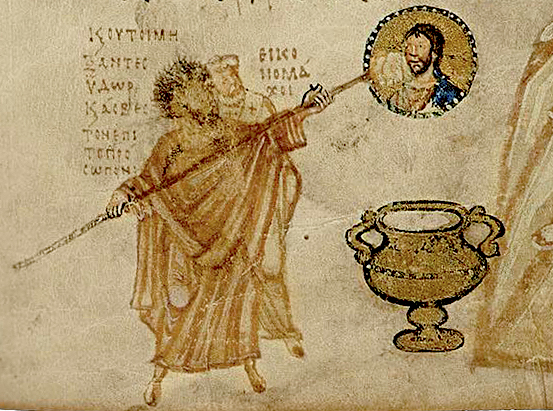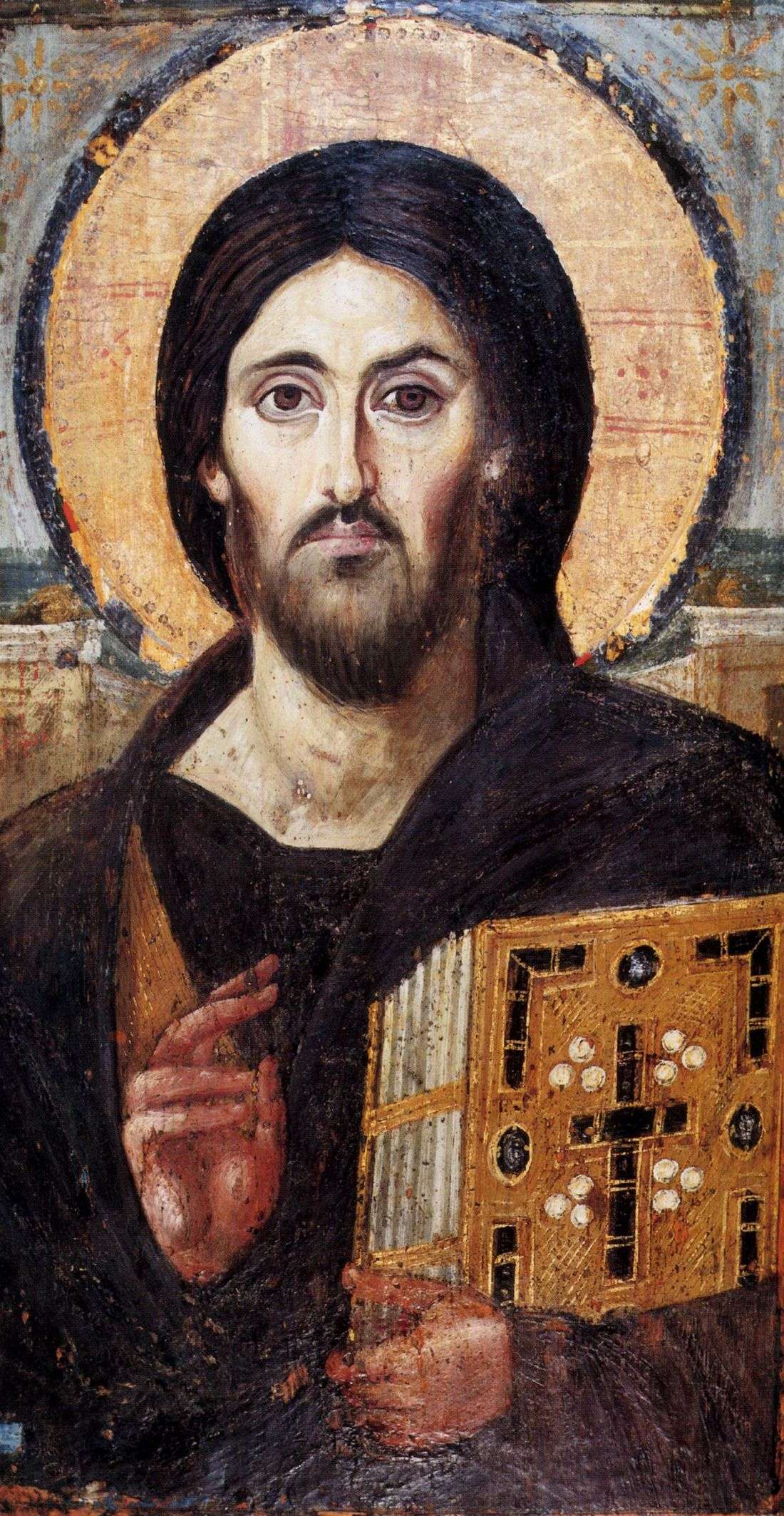The Art of Saint Catherine's Monastery: A Treasure Trove of Byzantine and Islamic Art
At the foot of Egypt's Mount Sinai lies Saint Catherine's Monastery, an ancient religious institution for over a millennium. Within its walls lies an incomparable treasure trove of Byzantine and Islamic art- a fascinating blend of cultural influences that have been brought together over centuries of spiritual and political history. The art of Saint Catherine's Monastery has long captured the imagination of historians, art enthusiasts and spiritual seekers alike, and rightly so. With its breathtaking beauty, intricate craftsmanship and rich symbolism, the art within Saint Catherine's Monastery is truly a window into the past - a glimpse into the lives and beliefs of those who lived within its walls and a testament to the enduring power of faith and creativity.

Introduction to Saint Catherine's Monastery in Sinai, Egypt
Welcome to the world-renowned Saint Catherine's Monastery in the Sinai Peninsula, Egypt. As the oldest continuously active monastery in the world, it holds great significance for Christianity, Judaism, and Islam. This monastery is believed to be where Moses encountered God as a burning bush and received the Ten Commandments. The location's importance has been recorded as a Christian pilgrimage site since the fourth century. The Byzantine Emperor, Justinian the Great, commissioned the construction of an impressive church and fortifications for the monastery to protect the surrounding imperial land in the sixth century. This monastery still attracts pilgrims and visitors yearly, thanks to its stunning history, sanctity, and picturesque beauty. This article will explore the art and architecture of this prestigious establishment, which holds the world's most extensive collection of Byzantine art.
Saint Catherine's Monastery is renowned for its extraordinary collection of Byzantine art. This historic establishment is an architectural marvel and holds some of the world's most outstanding works of art. The monastery's location is significant for Christianity, Judaism, and Islam, representing the iconic place where Moses encountered God. The monastery's collection of artefacts includes gifts of icons, manuscripts, embroideries, altar furnishings, and other liturgical objects and works of art. The sixth-century church holds a richly decorated sanctuary, a masterpiece in its own right.
Located at the foot of the mountain where Moses received the Ten Commandments, Saint Catherine's Monastery is one of the world's most significant religious sites. The monastery's walls and main church, built in the sixth century, still stand today. The exterior walls and church offer a glimpse into the Byzantine era's architecture, predominantly using ornamental elements of columns, arches, and domes. The monastery's location played a significant role in its preservation despite the centuries of conflict in the area. The monastery's collection of religious relics, icons, and manuscripts has grown continuously.
The Holy Monastery of Saint Catherine is a masterpiece of art and architecture and is significant in Christian history. The monastery's unique collection of Byzantine art brings to life the region's history and culture and serves as an essential religious and cultural destination for people from around the world. The monastery's art and architecture provide a glimpse into the Byzantine period's artistic style and techniques and help modern-day scholars better understand its significance and influence. A visit to Saint Catherine's Monastery is a journey of discovery and awe-inspiring wonder. It is a spiritual pilgrimage, sacred not only for Christians but also for people of every faith. [1][2]

History and Significance of Saint Catherine's Monastery
Saint Catherine’s Monastery, located in the Sinai Peninsula in Egypt, is a Byzantine and Islamic art treasure trove. It is the oldest continuously active monastery in the world, founded between 548-565 CE during the reign of Byzantine emperor Justinian as part of his initiative to establish monasteries across the empire. The monastery has historical, religious, and cultural significance for Christianity, Judaism, and Islam, as it is believed to be where Moses encountered God in the Burning Bush and received the Ten Commandments. The site has been a Christian pilgrimage site since the fourth century and continues to attract pilgrims and visitors worldwide each year.
The monastery is renowned for its extraordinary holding of Byzantine art, including its richly decorated sanctuary of the sixth-century church and its unparalleled collection of icons, manuscripts, embroideries, altar furnishings, and liturgical objects. The monastic community has added to the collection through the generations of pilgrims who bestowed gifts. The monastery’s exterior walls and main church largely survive from the original sixth-century construction phase. At the same time, a few elements, such as the bell tower, were added later in the 19th century. The monastery's location and its collection of art and architecture make it a significant cultural site, drawing scholars and visitors from around the world.
The Monastery of Saint Catherine is also renowned for its historical significance, being the site of the world-famous biblical event of the Burning Bush. According to tradition, Moses encountered God in a bush on fire but was not consumed. The monastery houses several artworks that depict the event, including an early thirteenth-century icon with Moses before the Burning Bush made of tempera and gold on wood. The site is considered holy in multiple Abrahamic religions, with the monastery serving as a place of worship and study for these faiths.
The Monastery of Saint Catherine is a testament to the rich and diverse cultural history of the Sinai Peninsula and the surrounding area. Its art and architecture reflect the influence of Byzantine and Islamic cultures, with the monastery serving as a bridge between them. The monastery has survived centuries of conflict and upheaval, bearing witness to the region's changing political and religious landscape. Despite this, the monastery continues to stand as a symbol of peace, unity, and cultural exchange. Today, it remains an important cultural site, a place of worship and study, and a popular destination for visitors worldwide. [3][4]

The Oldest Continuously Active Monastery in the World
Saint Catherine's Monastery on the Sinai Peninsula in Egypt is a must-visit if you love art and history. Established between 548-565 C.E., it is recognized as the oldest continuously active monastery in the world. Due to its proximity to where Moses received the Ten Commandments and the Burning Bush, it is a site of immense importance to Christianity, Judaism, and Islam. Justinian I, the Byzantine emperor, ordered the monastery's construction in the 6th century, and later generations of pilgrims contributed gifts that included icons, manuscripts, and liturgical objects, making it a treasure trove of Byzantine art.
The Monastery's architecture is remarkable, with its exterior walls and main church dating back to the 6th century. The church walls are adorned with exquisite mosaics, and visitors can see the fortified walls, the Chapel of the Burning Bush, and the remains of the Chapel of the Prophet Elijah. The monastery's buildings are beautifully presented in newly commissioned colour photographs in a book titled Saint Catherines Monastery Sinai Egypt: A Photographic Essay, making it possible to glimpse the richly decorated sanctuary of the sixth-century church. The book also includes an essay by Helen C. Evans and an introduction by His Eminence Archbishop Damianos of Sinai.
Multiple artworks depict the significant biblical event of the Burning Bush, where Moses encountered God and removed his sandals as he stood on holy ground. The monastery is renowned for its powerful collection of Byzantine art, with an entire room dedicated to vibrant and intricate icons. The collection includes an early thirteenth-century tempera and a gold icon depicting the Burning Bush episode. The Holy Monastery of Saint Catherine is a popular pilgrimage destination visited by thousands of people each year who are drawn to its history, hallowed ground, and scenic beauty.
The monastery's setting adds to its charms, with breathtaking mountain views, rocky cliffs, and magnificent architecture. Visitors can walk through the gardens, enjoy the peaceful atmosphere, and witness the vibrant artistic treasures still uncovered in the monastery's extensive collections. The fact that Saint Catherine's Monastery has survived intact over the centuries is highly impressive and a testament to its historical and religious significance. If you are passionate about Byzantine and Islamic art, Saint Catherine's Monastery is a must-see destination and will leave a lasting impression on anyone who visits. [5][6]
A Place of Pilgrimage and Spiritual Significance
The Monastery of Saint Catherine is a remarkable and historic place of pilgrimage for those seeking to experience ancient Egypt's rich heritage and culture. Located in the Sinai Peninsula at the base of Mount Sinai, the monastery is the oldest functioning Christian monastery in the world. Not only is the monastery significant for Christianity, but it also holds a place of spiritual significance for Judaism and Islam, as it is believed to be the site of the Burning Bush, where Moses encountered God.
The monastery's extraordinary holdings of Byzantine art are renowned worldwide. The exterior walls and main church of the Monastery of Saint Catherine, which pilgrims can still see today, largely survive from its original sixth-century construction phase. It contains multiple structures, including the Church of the Transfiguration of Christ, which has nine churches, and the Church of the Burning Bush, where God spoke to Moses. There are also ten other churches, the accommodation of the monks, a Fatimid mosque from the 12th century, and an olive press, among other things. The world's oldest, largest, and most famous library contains rare books and four and a half thousand old manuscripts in Arabic, Coptic, Greek, Syriac, Slavic, and other languages.
The walls of the monastery and the main church encompass a structure that is a real reminder of civilisation's greatness, as its thickness varies from 1.80 to 2.20 meters. The beauty of its interior decorations and the current Iconostasis date back to the 17th and 18th centuries. Many doors are still well preserved, 1400 years old, and have a Greek description that says, “This is the gate to the Lord. The righteous shall enter into it.” The monastery is a place of reflection and spiritual significance for Christians, Jews, and Muslims.
It is believed that the Great Byzantine Justinian built the Monastery of Saint Catherine in honour of Saint Catherine of Alexandria, a famous and great Saint in the Middle Ages in Europe who was tortured and then beheaded because of her faithfulness to Christianity. It was believed also that they used a spiked wheel to torture her and then said that angels moved her body to the top of the mountain. In perfect preservation, the monks discovered her body around 300 years after her death. The monastery is, therefore, a place that holds significance across cultures and religions, making it a place well worth visiting.
Overall, the Monastery of Saint Catherine is an exceptional treasure trove of Byzantine and Islamic art. Its rich history, cultural significance, and beauty make it one of the world's most captivating and fascinating places. As a place of pilgrimage and spiritual significance, it attracts visitors from around the globe who come to experience the wonder and awe of this ancient Egyptian land, to be reminded of the glory of civilization, and to pay homage to the faiths of Christianity, Judaism, and Islam. [7][8]

The Structure and Architecture of Saint Catherine's Monastery
If you're looking for a glimpse into the early Byzantine era, the Saint Catherine's Monastery in Sinai, Egypt, is a great starting point. It's the oldest active monastery globally, founded between 548-565 CE under Byzantine Emperor Justinian's reign. The monastery's location is of significant importance to Christianity, Islam, and Judaism as it marks where Moses received the Ten Commandments, seen in the artwork within the monastery's collection. The sixth-century construction phase still easily passes the test of time, with the monastery's exterior walls, main church, and other elements set in place even today.
Apart from the historical relevance, Saint Catherine's Monastery is also renowned for having an incredible collection of Byzantine art. The location went through fortification, and later generations of pilgrims added various artworks, manuscripts, liturgical objects, and other gifts, making it one of the world's most prominent collections of icons and other forms of Byzantine art. The monastery receives many visitors each year due to its historical and cultural importance, sanctity, and scenic beauty, and it still houses a monastic community.
Suppose you ever get a chance to visit Saint Catherine's Monastery. In that case, you can witness the richly decorated sanctuary of the sixth-century church and look at some stunning newly commissioned colour photographs. The monastery's information and impressive visuals are presented excellently to capture the reader's interest fully. The Curator of Early Christian and Byzantine Art at The Metropolitan Museum of Art, Helen C. Evans, and His Eminence Archbishop Damianos of Sinai provide an informative introduction and essay on the Holy Monastery. Members of the monastery's monastic community provide descriptive captions alongside the pictures, making it an excellent book for historical art enthusiasts.
The Saint Catherine's Monastery may be ancient and historical, but its art remains an unspoiled spectacle, representing the peak of Byzantine art. The Byzantine Empire was a multicultural hub, and this monastery represented that, having Islamic art blended with traditional Christian art. Among the notable artworks within the monastery, the icon with Moses before the Burning Bush from the early 13th century shines through, representing the encounter between Moses and God discussed in the Old Testament. This artwork stands out as the visuals on the painting effortlessly convey an entire story, showing God in a flaming bush.
Saint Catherine's Monastery is a great place to start if you want to explore the religious and cultural heritage of the Byzantine Empire and Eastern Christianity. It's not just a holy site but also a repository of some of the best examples of Byzantine and Islamic art that remain intact. From the sixth-century church to the centuries-old artworks, everything within the monastery has an air of antiquity, serving as a snapshot of a time long past that has held the test of time. [9][10]
